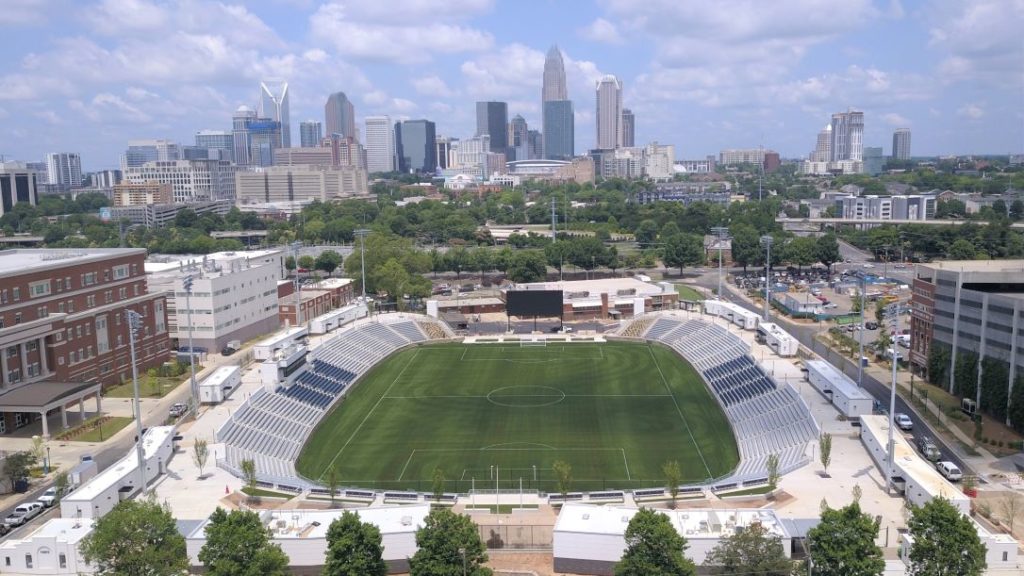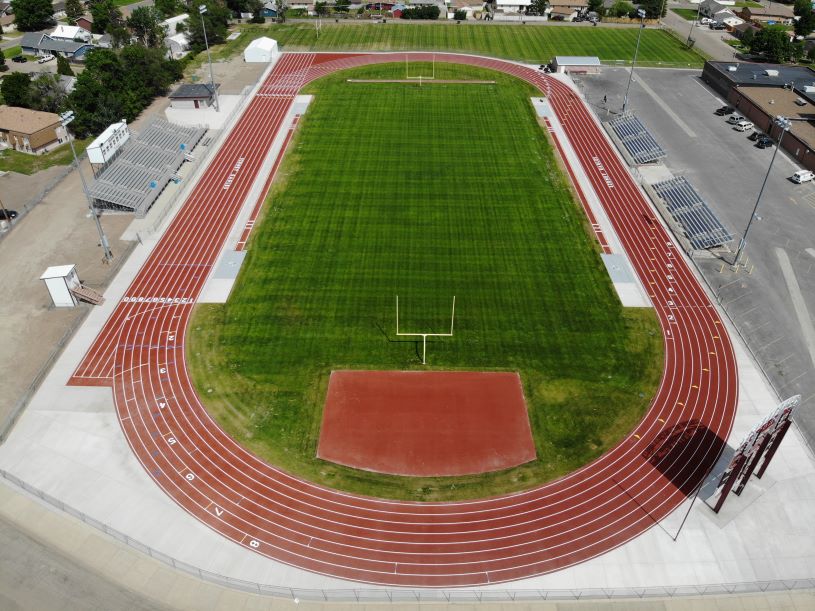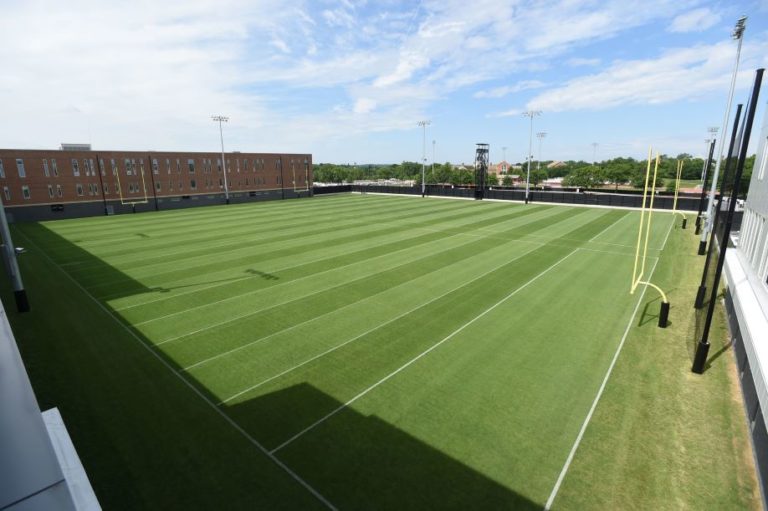By Mary Helen Sprecher
By far, one of the most labor-saving advantages for sports field managers has been the advent of irrigation systems that work automatically, coming on when athletes aren’t on the field, and shutting off the same way in order to allow adequate time for the water to be absorbed (in the case of a natural field) or to drain (in the case of a synthetic field).
Irrigation systems are hardly new, or newsworthy, but because the technology that operates them keeps advancing, it is imperative to stay informed. Making the best choices when selecting a system, and following best practices in maintenance, are key ingredients to having a field that performs well.
When planning for irrigation, managers should be asking a few questions, said Todd Smith of R&R Engineers-Surveyors, Inc. in Denver, Colo.
“Find out whether the system is remote-controlled or Internet-accessed,” he said. “There are different types out there, and knowing what you need in advance will save you time when you’re shopping systems.”
System placement details
Additionally, in the case of natural grass, Smith said, “Irrigation layout and zones should be based on heavy-use areas of the field. What sports are going to be played? This affects head spacing and zone layout. Be aware that there are moisture sensors that can be installed in the ground and connected to the controller to help with timing and with the need for watering.”
Some places on the field will get more wear than others, and thus may need more oversight. For example, in football, the center of the field will see the most action. In soccer, expect the area around the goal to get heavy use. In lacrosse, the crease may be the problem area.
Fields that host multiple sports, even when they are synthetic, can show wear as well, so keep an eye on your surface throughout the year.
Also, Smith notes, take into consideration the climate in your region when planning for irrigation. When it comes to synthetic fields, for example, the ability to control the system quickly and easily is paramount.
“In the Mountain West and Southwest, the humidity is so low that synthetic field irrigation has been shown to drop the surface temperature between 30 and 40 degrees. Of course, if the sun is out, that temperature can be right back up 20 to 30 minutes later. You can barely water the field at halftime before it goes back up to the original temperature. There are infill additives that will hold water and reduce temps for two to four hours once water is added – if the right additive is used in the right part of the country.”
Discuss options with your irrigation system vendor, as well as with the turf installer or manufacturer, who can provide guidance. It is important to note, Smith added, that synthetic systems often tout their effectiveness as a water-savings measure, so ascertain if your technology is helping the field meet its water-savings goal.

Irrigation practices
One of the more commonly made errors, particularly those whose scope of knowledge does not really include agronomy, is overwatering of fields.
“Cool-season grasses only look green when the temperature is consistently between 60 and 80 degrees,” said Smith. “Right now, there are many homes, fields and parks overwatering because the grass is turning brown. That browning, though, is a natural part of the grass’s self-preservation; it goes dormant when the temperature is above 80 degrees. It only looks green when watering because it’s being cooled; but because it’s going to turn brown once it warms up, keeping it wet is just a waste of water.”
Being aware of seasonal changes and updating the runtime of the system to compensate for those changes is imperative.
“Grass needs to stress,” said Smith. “Healthy grass has deep roots. Water enough to soak deep into the ground, and then back-off and cause the roots to go deeper. It’s like hitting the gym; you stress your muscles and then feed them for recovery.”
Another commonly made mistake is the overuse of nitrogen fertilizers. By balancing nitrogen with potassium and phosphorus, managers can help the roots grow and store the energy necessary to remain healthy, particularly in the face of heavier use.
Sprinkler maintenance
Once they are in place, sprinkler systems require regular attention to keep functioning at their best. Without early detection, small problems can become much bigger.
The good news, of course, is that it doesn’t need to be hard to prevent this. It just requires a few simple tools already at your disposal: Your eyes – and all of your attention, given to the system on a regular basis to make sure it is operating at its maximum efficiency. Even better news: This will allow you to see any problems that might be forming on your field.

Perform an irrigation system check-up
Regardless of whether you have natural grass or synthetic turf, the next few pieces of advice apply.
On a regular basis, turn on your irrigation – and just watch it for a few minutes. Make sure all sprinkler heads are working, and that they are spraying in the direction you want them to: your field. Check for overspray that could be landing on your track or any existing structures. In addition to wasting water, misdirected sprinklers can, over time, cause damage to your track. Catching problems early can mean the difference between an easy fix (just the sprinkler head) and the need for a more complicated, expensive and in-depth repair (the track surface).
“One of the most commonly made mistakes is not checking the heads and zones to make sure there’s head-to-head coverage,” said Smith. “There’s no substitute for it.”
A few other measures that should be taken:
- Check the water pressure and make sure it is consistent across the field. If pressure is weak overall (or in any areas), that is something that will need to be addressed. Leaks in the supply pipe, leaks in fittings, intakes that can draw in air or dropping water levels can all be causes for the irrigation pump losing its prime and not functioning effectively.
- After watching your system run, shut it off and see how quickly the water drains/absorbs. In the case of synthetic fields, if there are places where water is collecting, there may be a problem with the drainage in that area.
- Keep an eye on curbs, drains and other areas as well, and clean drain inlets on a regular basis. Keeping the water flowing can help prevent backups. It can also go a long way toward averting any water-related damage to both your track and field.
With proper planning and regular maintenance, irrigation systems can continue to perform well, and to enhance the quality of play on the field for years to come.
Mary Helen Sprecher wrote this article on behalf of the American Sports Builders Association (www.sportsbuilders.org), the national organization for builders, design professionals and suppliers of materials for sports fields, running tracks, tennis courts and indoor and outdoor courts and recreational facilities.


